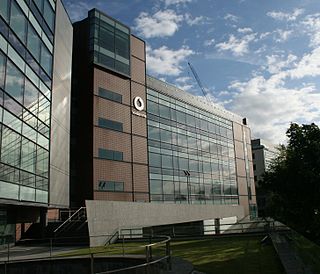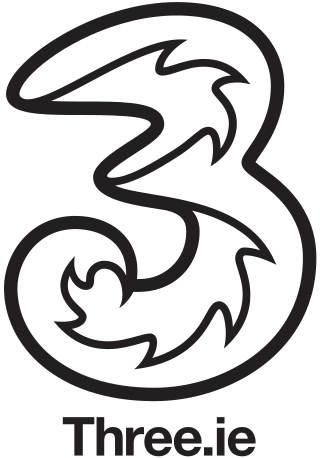
Telecommunications in Ghana include radio, television, fixed and mobile telephones, and the Internet.
The services of communication in Jersey comprise Internet, telephone, broadcasting and postal services, which allow islanders to contact people and receive information.
The primary regulator of telecommunications in Malaysia is the Malaysian Communications and Multimedia Commission (MCMC). It issues licenses under the Communications and Multimedia Act 1998, the Postal Services Act 2012 and the Digital Signature Act 1997.

Telecommunications infrastructure in South Africa provides modern and efficient service to urban areas, including cellular and internet services. The Independent Communications Authority of South Africa (ICASA) is the watchdog of the telecommunications in the country.
Telecommunications in Sri Lanka commenced in 1858 after the first telegraphic circuit between Colombo and Galle was commenced. The sector continues to grow in the modern times.
Telecommunications in the United Kingdom have evolved from the early days of the telegraph to modern broadband and mobile phone networks with Internet services.
The telecommunication systems in Vanuatu provides voice and data services to the island nation.
There are a number of systems of communication in Uganda, including a system of telephony, radio and television broadcasts, internet, mail, and several newspapers. The use of phones and the internet in Uganda has rapidly increased in the last few years.
Portugal has a modern and flexible telecommunications market and a wide range of varied media organisations. The regulatory body overseeing communications is called ANACOM.
Television in the Republic of Ireland is available through a variety of platforms. The digital terrestrial television service is known as Saorview and is the primary source of broadcast television since analogue transmissions ended on 24 October 2012. Digital satellite and digital cable are also widely used.

Eircom Limited, trading as Eir, is a large fixed, mobile and broadband telecommunications company in Ireland. The now privatised company, which is currently incorporated in Jersey, traces its origins to the Ireland's former state-owned monopoly telecommunication provider Telecom Éireann and its predecessors, P&T and before the foundation of the state, the telecommunications division of the GPO. It remains the largest telecommunications operator in Ireland and has overseas operations focused on the business and corporate telecom markets in the United Kingdom. The company was in majority state ownership until 1999, when it was privatised through a floatation on the Irish and New York Stock Exchanges.
Meteor Mobile Communications Limited was a GSM and UMTS mobile telecommunications company in Ireland. They operated a GSM/GPRS/EDGE/UMTS(HSPA+) and LTE cellular communications network under licence from the Commission for Communications Regulation (ComReg), and were the third entrant in the market, after Vodafone Ireland and Three Ireland. The company was a wholly owned subsidiary of Irish telecoms network Eir, having been purchased for €420m in 2005. Meteor was the only Irish owned mobile operator in Ireland. Meteor once issued new numbers with the prefix code 085. Since the introduction of full mobile number portability in Ireland, access codes have become less relevant as mobile telephone users may now retain their mobile telephone numbers when moving between mobile network operators. As a result, Meteor customers could have numbers starting with the codes 083, 085, 086, 087, or 089.

Vodafone Ireland Limited, a wholly owned subsidiary of the Vodafone Group, is a mobile phone network and broadband provider in Ireland. It was created when the Vodafone Group bought Eircell, the mobile arm of Telecom Éireann. As of September 2019, Vodafone has 26% of broadband subscribers, and 43% of mobile phone subscribers.

Smart Telecom (AIM:SMR) was an Irish telecom operator that started as a phone card seller. It was also the third largest provider of cost-sensitive telecom services sector in Ireland, behind the incumbent operators eircom and BT Ireland. It had an estimated 50,000 land-line customers and 18,000 broadband subscribers. Smart operated several services:
Digiweb is a telecommunications company in Ireland, supplying business and consumer broadband and web hosting, and a group of companies in the telecoms and technology sectors.

Virgin Media Ireland is Liberty Global's telecommunications operation in Ireland. It is the largest digital cable television provider within the country. As of 31 December 2014, the company offers broadband internet, digital television and digital (VoIP) telephony to 1 million customers. Until 4 May 2010, Virgin Media Ireland traded under the name Chorus NTL and UPC Ireland until 5 October 2015. Its main competitors in the Irish pay TV market are Sky Ireland, Eir and Vodafone Ireland.
Internet access is widely available in New Zealand, with 94% of New Zealanders having access to the internet as of January 2021. It first became accessible to university students in the country in 1989. As of June 2018, there are 1,867,000 broadband connections, of which 1,524,000 are residential and 361,000 are business or government.

Internet usage in Ireland was reported at a 95% rate among individuals by 2022, higher than the European Union (EU) average of 89%. According to the European Commission's Digital Economy and Society Index (DESI) 2023 report, 70% of Irish adults had at least basic digital skills in 2021, above the EU average of 54%. Additionally, 77% demonstrated basic digital content creation skills, exceeding the EU average of 66%. Ireland's National Digital Strategy, along with the 10-year Adult Literacy for Life strategy, aims to enhance digital competencies across the workforce and society.
In Romania, there are 18.8 million connections to the Internet. Romania's country code is .ro. The .eu domain is also used, as it is shared with other European Union member states. There were over 600 000 domains registered under .ro at the end of 2012.

Three Ireland (Hutchison) Limited, commonly known as 3 Ireland or Three Ireland, is a telecommunications and Internet service provider operating in Ireland as a subsidiary of CK Hutchison Holdings, operating under the global Three brand. The company launched in July 2005 and provides 2G GSM, 3G UMTS, 4G LTE and 5G NR mobile phone services. Three's former holding company, Hutchison Whampoa, acquired O2 Ireland in June 2013, and the company was fully merged into the operations of Three Ireland in March 2015.








